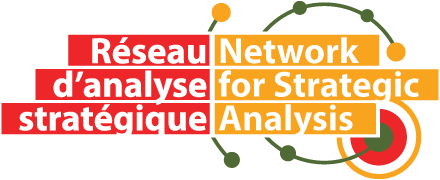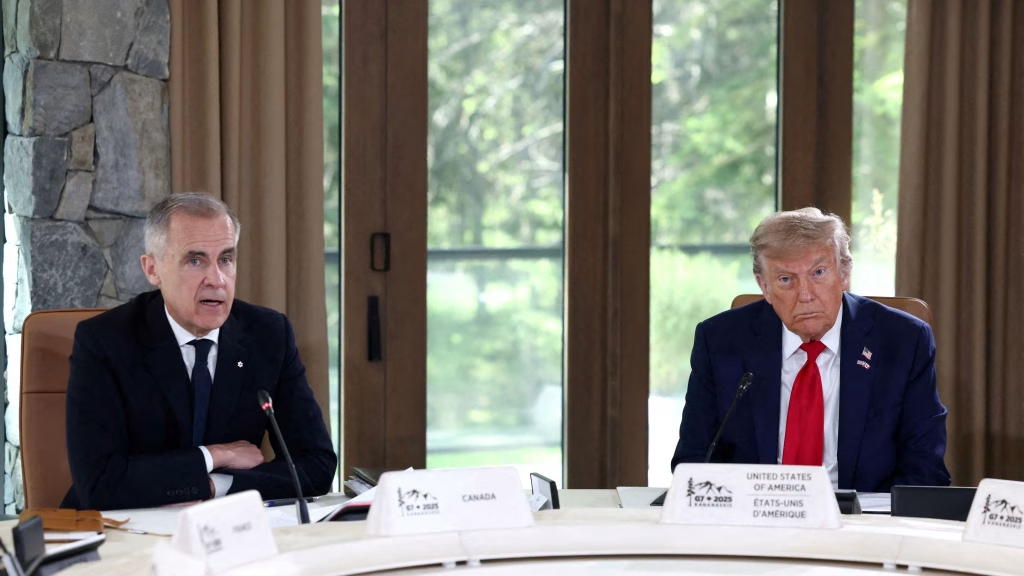Over the last few months, President Trump’s threats of Canada as a “51st state” have reignited Canadian feelings of national insecurity and awoken a patriotic rallying cry amongst the populace. As a result, many Canadian politicians and pundits continue calling to end our reliance on the US and find a new star to hitch our wagon to. While diversification must be pursued, those suggesting Canada walk away from the US (and perhaps join the EU) are in need of a reality check. Any serious assessment of Canada’s place in the world must conclude that its partnership with the US remains its greatest asset.
If we are to have an honest discussion about Canadian interests, then we cannot let pride and insecurities get in the way. Forging an identity and finding Canada’s “place on the world stage” should start by increasing our negotiation power with our indispensable partner (the United States). To this end, Canada should make a greater investment in defence capabilities to achieve what most Canadians are looking for: 1) greater leverage with the US, and 2) greater capacity to act independently from the US if need be. In other words, to invest in Canada’s defence is to invest in Canada’s independence.
Trump’s actions speak louder than his words.
Lest I be accused of being overly sympathetic to the current US President, allow me to make my view clear upfront: Trump poses an unprecedented threat to Canadian security and prosperity. However, Canada’s close partnership with the United States must endure because neither country can survive without the other. While we should be wary of Trump’s imperial menaces, we should be even more watchful of his actions, or in some cases, lack of actions.
By his own admission, the idea of Donald Trump ordering a military invasion into Canada remains extremely unlikely. His wish to incorporate Canada into US real estate holdings is rooted in his P.T. Barnum-esque flair and bombastic negotiating tactics than in any realist agenda. Much like Barnum, the famed showman who captivated audiences with exaggerated spectacles, Trump frequently tosses out inflammatory ideas without the follow-through like his unfulfilled 2016 promise to build a wall entirely paid for by Mexico. Rather than getting head faked by his constant menacing, building a more resilient Canada remains the best method to Trump proof the country.
Independence begins at home
To secure Canada’s long-term security and independence, logic dictates that we must invest in our national security infrastructure. This produces several benefits: protecting Canada, making us a more reliable ally to all our partners, and building a new national identity as a protector of our country and defender of our allies, not as a supplicant or sidekick in need of a patron to protect him when things get rough.
A good place to start would be to further invest in the Canadian navy and coast guard to help Canada assert sovereignty over the longest coastline in the world and be invaluable help to allies to secure maritime shipping lanes, help patrol against illegal activity and act as a deterrent to potential maritime embargos, chokepoints, blockades and other flashpoints. Furthermore, as we seek to strengthen relationships with new allies, there are two countries that Canada needs to strengthen more than any other: Japan and South Korea. Stronger naval capacity would allow Canada to participate in Asia Pacific missions to shore up new alliances. Most of the commercial growth for Canada and most of the global political risk lie in the Indo Pacific. The Canadian Indo Pacific strategy launched under Justin Trudeau in 2022 contained similar policy recommendations, we just need to start implementing them.
More naval assets would also better protect the Canadian Arctic. China continues to clandestinely map Canada’s seabed and builds ice breakers with a deep-diving submersible that could put deep-sea cables at risk. Canada has taken a good step in its commitment to build new submarines and ships but more is needed. Autonomous marine systems like underwater vehicles, anti-drone capability and rapidly deployable sensors must be part of building a new independent identity. A strong marine presence on Canada’s coasts and in the Arctic sends a strong message to the United States and to the Canadian public that its identity and defence is not dependent on being America’s sidekick.
Mark Carney has announced a new dawn, but have things really changed?
The Carney Government’s message on the campaign trail regarding Canada US relations was crystal clear: the US has become an unreliable partner and it’s time to review options. In his announcement to renew Canada’s military, he specifically mentioned that Canada must reduce its dependence on the United States and promised billions of dollars of additional investments towards a Canadian industrial defence strategy as well as participation in ReArm Europe, in order to diversify defence spending. However pure his intentions, Mark Carney’s actions (so far) tell a different story.
On defence acquisitions, we are still buying American for the time being. Despite numerous suggestions that Canada should halt the purchase of American F-35 fighter jets and take our business to Europe, the truth of the matter is that finding a different supplier at this point would not only be prohibitive in terms of price, it would further delay a replacement process that began in the late 1990’s and was supposed to have delivered its last jet 15 years ago. Canada’s chief of defence Jennie Carignan has recently signaled her aversion to switching out the F-35’s by stating that buying a European jet would only add more costs.
In fact, the idea of pivoting to Europe for defence purchases also relies on a very optimistic assessment of what Canada can realistically achieve with transatlantic allies in matters of industry. While Canada’s recent adhesion to a strategic defence and security partnership with the European Union gave the impression that Canada’s defence sector can now compete for contracts in Europe, the hard truth remains that European defence markets remain highly protected, with industry leaders reluctant to cede ground, and are themselves grappling with equipment shortfalls and production bottlenecks in the wake of renewed demand.
Even the UK is being made to pay a substantial price of admission to participate in the EU rearm program and despite a lot of tough talk from the EU on how it needs to rely on itself for defence, it has just promised to purchase up to $600 billion in US military equipment as part of their trade deal with Washington. Canada can expect similar demands from Trump and we will likely acquiesce. The hard truth is Canadian defence contractors are deeply embedded in North American supply chains—financially, technically, and logistically. They cannot simply pack up and reorient to an entirely different ecosystem without enormous cost, disruption, and uncertainty.
On the matter of securing Canada’s perimeter, Mr. Carney appears to be drawing ever closer to the United States, signaling that he is open to joining the American “Golden Dome” otherwise known as Trump’s proposed multi-layer missile defence system for the United States. Should Canada join the Golden Dome, Carney would be charting new territory: no Canadian Prime Minister — from Pearson to Mulroney to Justin Trudeau — has ever formally partnered with the U.S. on missile defense. Participation in missile defence would not only mark a historic shift in Canadian defense policy, but it would also further reinforce NORAD, Canada’s most important security alliance and the only military partnership the United States has vowed to honor indefinitely.
On the economic front, Prime Minister Carney continues to forge what may be the closest Canada–U.S. partnership in a generation. At the heart of this effort is his ambitious push for a new bilateral security and trade agreement—an initiative Carney says is the result of direct and ongoing direct talks (and texts) with President Donald Trump himself. The goal: to secure long-term market stability and to lift or mitigate the tariffs that threaten sectors of the Canadian economy. Yet even under the weight of these punitive tariffs, Canada remains the United States’ most privileged trading partner, enjoying greater market access than any other country. These developments sharply undercut any narrative that Canada is drifting from Washington; in truth, the data points to a deepening partnership—economically, diplomatically, and strategically.
Doomed to succeed
No matter how bad things get between Canada and the US, we will still be each other’s main security and defence partner. Those calling for Canada to abandon the US and find a new great power partner (example, the EU) are forgetting our unique geographical position and are overly optimistic about what other potential partners and allies can provide. If we are truly interested in independence, we have the power to come to our own rescue via investments in our own defence and security that makes us more resilient to US arm twisting. For these reasons, an increase in spending on defence remains the best way to consolidate Canadian interests and give us the strength and independence to negotiate with the US as a partner and not as a beggar.
About the Author
Ross O’Connor was previously Foreign Affairs and National Security advisor to Prime Minister Stephen Harper and Senior Policy Advisor to Ministers of Foreign Affairs and Defense.




Comments are closed.